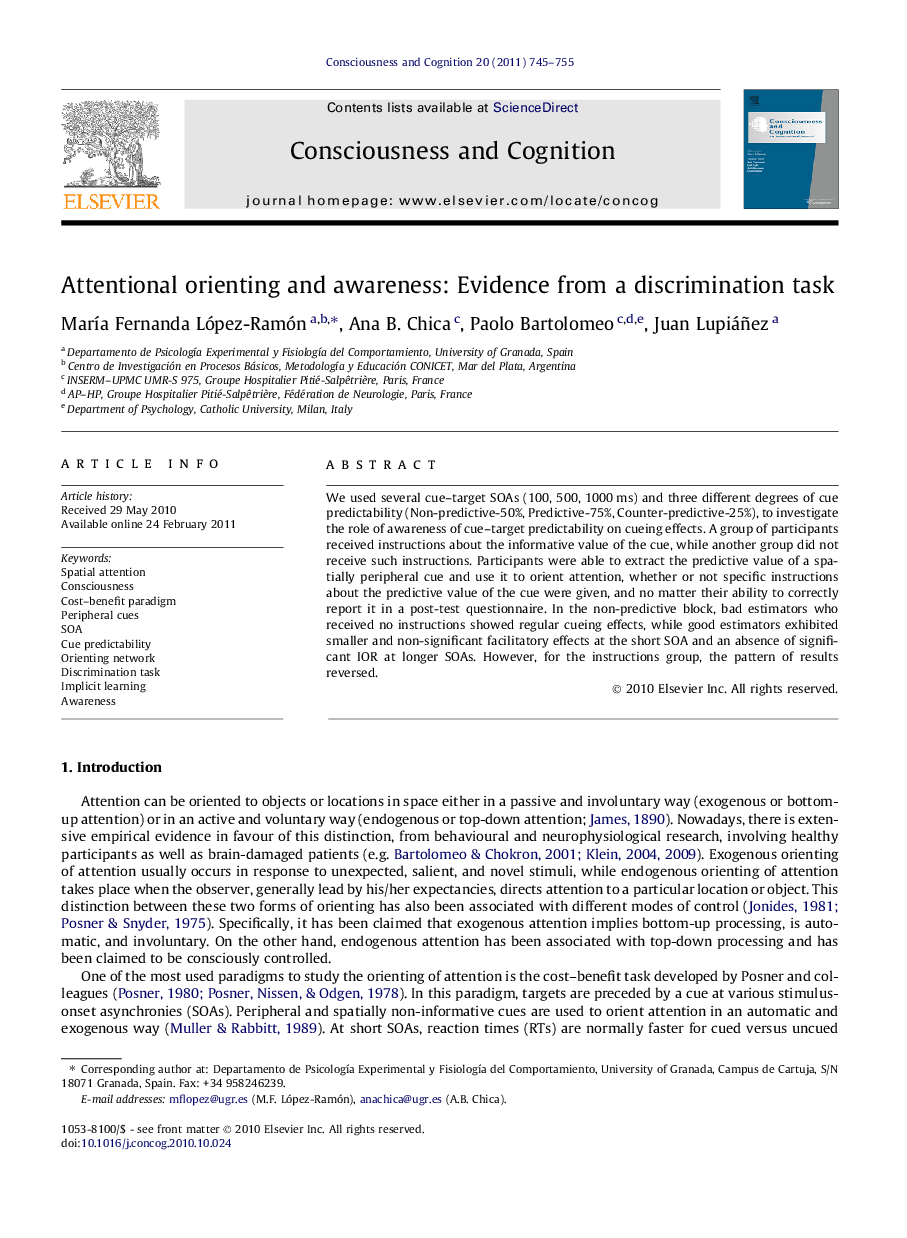| Article ID | Journal | Published Year | Pages | File Type |
|---|---|---|---|---|
| 10458706 | Consciousness and Cognition | 2011 | 11 Pages |
Abstract
We used several cue-target SOAs (100, 500, 1000Â ms) and three different degrees of cue predictability (Non-predictive-50%, Predictive-75%, Counter-predictive-25%), to investigate the role of awareness of cue-target predictability on cueing effects. A group of participants received instructions about the informative value of the cue, while another group did not receive such instructions. Participants were able to extract the predictive value of a spatially peripheral cue and use it to orient attention, whether or not specific instructions about the predictive value of the cue were given, and no matter their ability to correctly report it in a post-test questionnaire. In the non-predictive block, bad estimators who received no instructions showed regular cueing effects, while good estimators exhibited smaller and non-significant facilitatory effects at the short SOA and an absence of significant IOR at longer SOAs. However, for the instructions group, the pattern of results reversed.
Keywords
Related Topics
Life Sciences
Neuroscience
Cognitive Neuroscience
Authors
MarÃa Fernanda López-Ramón, Ana B. Chica, Paolo Bartolomeo, Juan Lupiáñez,
